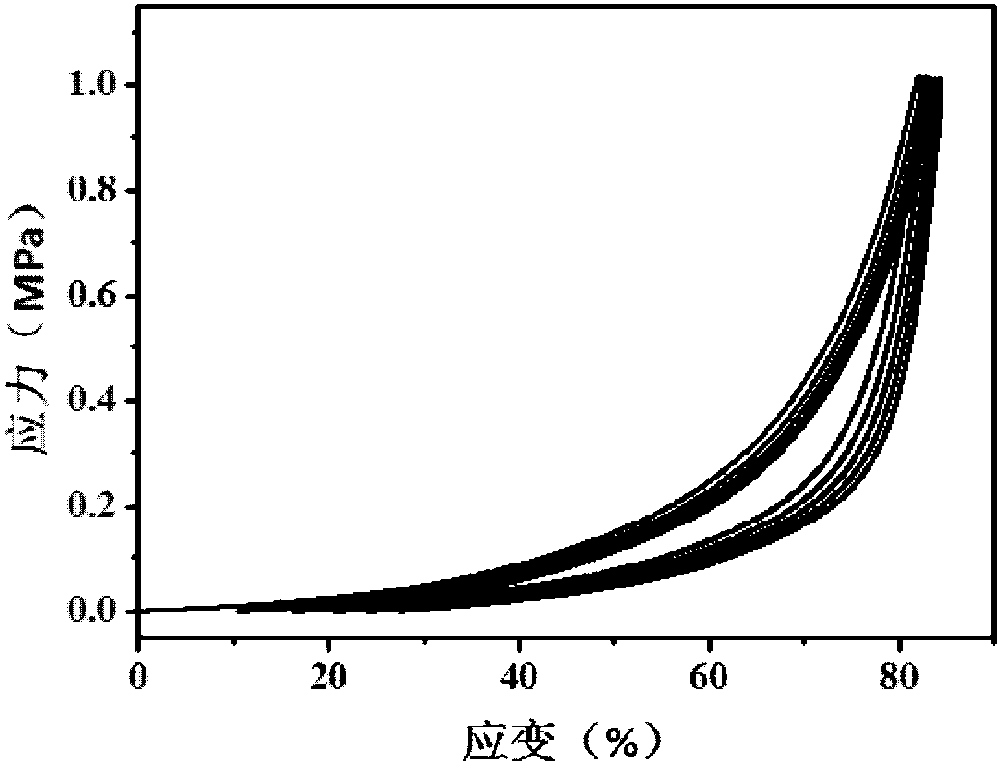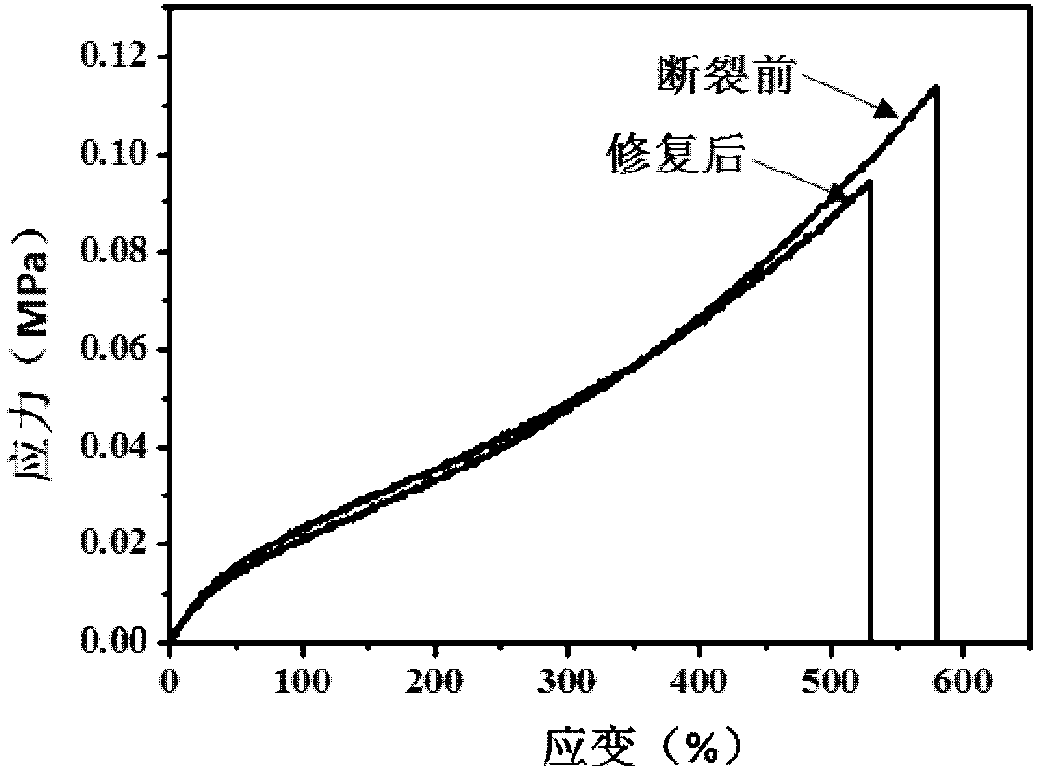Method for preparing self-repairing hydrogel by guiding polymerization through natural polymer template
A natural polymer and self-healing technology, applied in the field of self-healing polymer hydrogel, can solve the problems of poor recoverability and self-healing ability, poor toughness, low mechanical strength, etc., to improve the interaction and increase the binding position point, self-healing process simple effect
- Summary
- Abstract
- Description
- Claims
- Application Information
AI Technical Summary
Problems solved by technology
Method used
Image
Examples
Embodiment 1
[0025] 1) Dissolve 1g of sodium alginate in 100mL of deionized water; dissolve 0.2g of sodium periodate in 20mL of deionized water, and add dropwise to the sodium alginate solution, and stir for 12 hours at room temperature; then add 0.1 mL ethylene glycol, continue to stir for 0.5 hours; then add the above mixed solution dropwise to 0.2L ethanol solution to precipitate, filter and vacuum dry for 2 hours, seal and refrigerate for later use.
[0026] 2) Dissolve 0.1 g of oxidized sodium alginate in 6.5 mL of deionized water, then add 0.5 g of acrylic acid monomer and stir for 20 min.
[0027] 3) Add 0.5mL NaOH (0.5mol / L) solution to the above mixture, and continue stirring for 20min.
[0028] 4) Add 0.0025 g of ammonium persulfate to the above solution, and continue stirring for 10 min.
[0029] 5) Add 0.0025 mL of tetramethylethylenediamine to the above solution, and continue stirring for 1 min.
[0030] 6) Inject the above liquid into a specific mold and react at 25°C for 1...
Embodiment 2
[0034] 1) Dissolve 5g of sodium alginate in 100mL of deionized water; dissolve 10g of sodium periodate in 20mL of deionized water, and add dropwise into the sodium alginate solution, and stir for 12 hours at room temperature; then add 5mL of ethyl alcohol dropwise Diol, continue to stir for 0.5 hours; then add the above mixed solution dropwise to 1.0L ethanol solution to precipitate, filter and vacuum dry for 12 hours, seal and refrigerate for later use.
[0035] 2) Dissolve 0.1 g of oxidized sodium alginate in 6.5 mL of deionized water, then add 0.5 g of acrylic acid monomer and stir for 20 min.
[0036] 3) Add 0.5mL NaOH (0.5mol / L) solution to the above mixture, and continue stirring for 20min.
[0037] 4) Add 0.0025 g of ammonium persulfate to the above solution, and continue stirring for 10 min.
[0038] 5) Add 0.0025 mL of tetramethylethylenediamine to the above solution, and continue stirring for 1 min.
[0039] 6) Inject the above liquid into a specific mold and react...
Embodiment 3
[0043] 1) Dissolve 2.5g sodium alginate in 100mL deionized water; dissolve 2.5g sodium periodate in 20mL deionized water, and add dropwise to the sodium alginate solution, stir for 12 hours at room temperature; then add dropwise 2mL ethylene glycol, continue to stir for 0.5 hours; then add the above mixed solution dropwise to 0.5L ethanol solution to precipitate, filter and vacuum dry for 12h, seal and refrigerate for later use.
[0044] 2) Dissolve 0.1 g of oxidized sodium alginate in 6.5 mL of deionized water, then add 0.5 g of acrylic acid monomer and stir for 20 min.
[0045] 3) Add 0.5mL NaOH (0.5mol / L) solution to the above mixture, and continue stirring for 20min.
[0046] 4) Add 0.0025 g of ammonium persulfate to the above solution, and continue stirring for 10 min.
[0047] 5) Add 0.0025 mL of tetramethylethylenediamine to the above solution, and continue stirring for 1 min.
[0048] 6) Inject the above liquid into a specific mold and react at 25°C for 1 hour.
[0...
PUM
 Login to View More
Login to View More Abstract
Description
Claims
Application Information
 Login to View More
Login to View More - R&D
- Intellectual Property
- Life Sciences
- Materials
- Tech Scout
- Unparalleled Data Quality
- Higher Quality Content
- 60% Fewer Hallucinations
Browse by: Latest US Patents, China's latest patents, Technical Efficacy Thesaurus, Application Domain, Technology Topic, Popular Technical Reports.
© 2025 PatSnap. All rights reserved.Legal|Privacy policy|Modern Slavery Act Transparency Statement|Sitemap|About US| Contact US: help@patsnap.com


